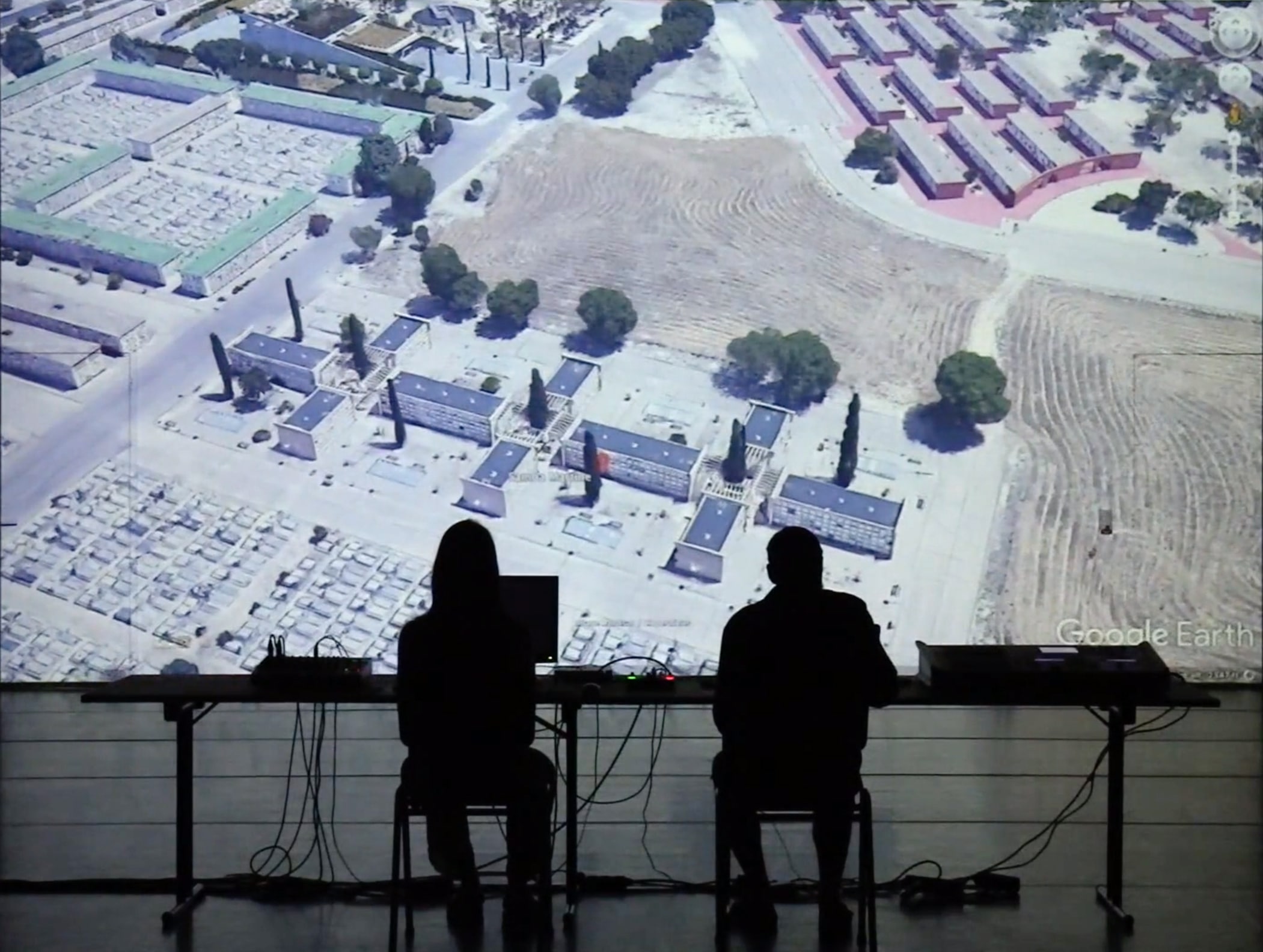


 "Necropolis" (2020) by Arkadi Zaides. Courtesy of the artist. Photos (1 ) © Institut des Croisements, (2+3) © Eike Walkenhorst (4) © Arkadi Zaides
"Necropolis" (2020) by Arkadi Zaides. Courtesy of the artist. Photos (1 ) © Institut des Croisements, (2+3) © Eike Walkenhorst (4) © Arkadi ZaidesNECROPOLIS
Since 1993, UNITED for Intercultural Action, a network of hundreds of anti-racist organizations from all over Europe, has been compiling a list of the names of refugees and migrants who have died while trying to reach the continent. As of June 2022, the latest version of the list includes information on 48,647 reported deaths. However, the actual number is likely much higher, as many deaths go unregistered and unreported. The list is long and it is striking that only a small number of the deceased are named, leaving the majority unidentified.
European laws establish a clear distinction between criminal, natural, and accidental deaths, which determines how the bodies are handled. However, the thousands of deaths that occur at Europe's borders challenge this classification, and as a result, forensic procedures to collect medical and biological data from corpses are not typically carried out. This lack of information prevents any possibility of future identification of the victims. At the bottom of the sea, on the shores, and inland, a mass of decomposed bodies tells the story of a collective whose ghost hovers over European territory.
For his research, Arkadi Zaides and his team delve into the practice of forensics to create a new virtual repository documenting the remains of those whose deaths remain largely unacknowledged. This growing archive, this map, this invisible landscape stretches in all directions across space and time, interrelating the mythologies, histories, geographies, and anatomies of those who have been admitted to the NECROPOLIS. Freedom of movement needs to be returned to the bodies who are admitted to Europe as corpses. And although in the City of the Dead there is no-body left to dance, it is exactly that no-body, that body of the bodies - the body of NECROPOLIS - that Zaides aims to bring back to life.
European laws establish a clear distinction between criminal, natural, and accidental deaths, which determines how the bodies are handled. However, the thousands of deaths that occur at Europe's borders challenge this classification, and as a result, forensic procedures to collect medical and biological data from corpses are not typically carried out. This lack of information prevents any possibility of future identification of the victims. At the bottom of the sea, on the shores, and inland, a mass of decomposed bodies tells the story of a collective whose ghost hovers over European territory.
For his research, Arkadi Zaides and his team delve into the practice of forensics to create a new virtual repository documenting the remains of those whose deaths remain largely unacknowledged. This growing archive, this map, this invisible landscape stretches in all directions across space and time, interrelating the mythologies, histories, geographies, and anatomies of those who have been admitted to the NECROPOLIS. Freedom of movement needs to be returned to the bodies who are admitted to Europe as corpses. And although in the City of the Dead there is no-body left to dance, it is exactly that no-body, that body of the bodies - the body of NECROPOLIS - that Zaides aims to bring back to life.
CREDITS
Concept & direction
Arkadi Zaides
Dramaturgy, text and voice
Igor Dobricic
Research and choreography assistant
Emma Gioia
Sculpture
Moran Senderovich
3D modeling
Mark Florquin
Avatar animation
Jean Hubert
Animation assistant
Thibaut Rostagnat
Sound design
Aslı Kobaner
Grave location search
Aktina Stathaki, Amalie Lynge Lyngesen, Amber Maes, Amirsalar Kavoosi, Ans Van Gasse, Arkadi Zaides, Benjamin Pohlig, Bianca Frasso, Carolina-Maria Van Thillo, Prof. dr. Christel Stalpaert, Doreen Kutzke, Dorsa Kavoosi, Elisa Franceschini, Elvura Quesada, Emma Gioia, Eva Maes, Filippo Furri, Frédéric Pouillaude, Gabriel Smeets, Giorgia Mirto, Gosia Juszczak, Igor Dobricic, Ilka Van Bijlen, Jordy Minne, Joris Van Imschoot, Julia Asperska, Juliane Beck, Katia Gandolfi, Katja Seitajoki, Lilas Forissier, Lina Gilani Tsitouri, Lovis Heuss, Luca Lotano, Lucille Haddad, Maite Zabalza, Maria Sierra Carretero, Mercedes Roldan, Myriam Van Imschoot, Myrto Katsiki, Osnat Kelner, Özge Atmış, Pepa Torres Perez, Sarah Leo, Selby Jenkins, Simge Gücük, Solveig Gade, Sunniva Vikør Egenes, Tamara Vajdíková, Tilemachos Tsolis, Yannick Bosc, Yari Stilo
Administration & production
Simge Gücük / Institut des Croisements
Co-produced by
Théâtre de la Ville (FR), Montpellier Danse 40 Bis (FR), Charleroi Danse (BE), CCN2 Centre chorégraphique national de Grenoble (FR), Les ballets C de la B(BE), Tanz im August / HAU Hebbel am Ufer (DE), La Filature – Scène nationale de Mulhouse (FR)
Residency support
STUK (BE), CCN – Ballet de Lorraine (FR), Workspacebrussels (BE), PACT Zollverein (DE), WP Zimmer (BE), Cie Thor (BE)
Support for experimentation
RAMDAM, un centre d'art (FR)
Distribution
Something Great